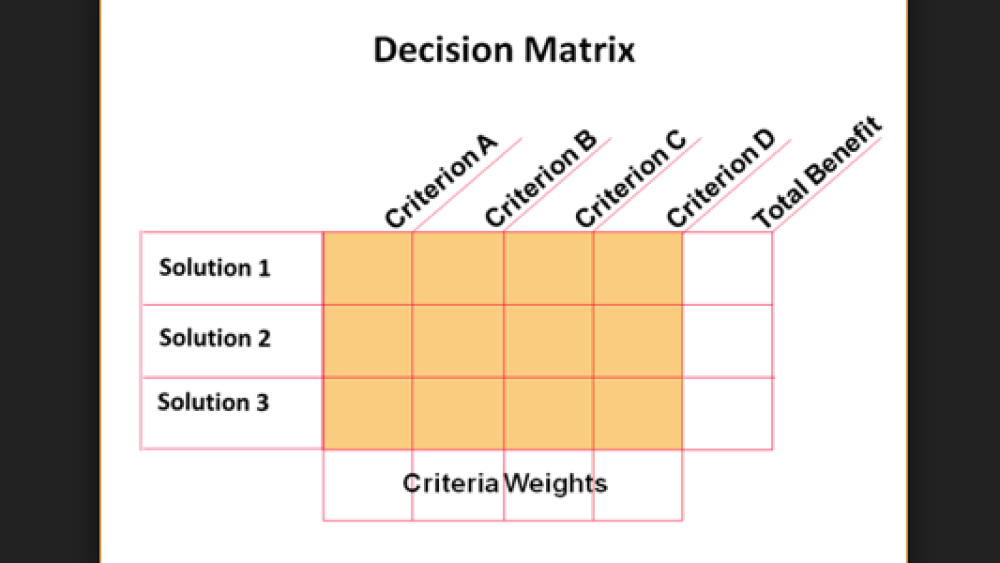Deeper problems, outside a yes-no decision, require a well-crafted plan to avoid the mental pitfalls that leave the best decisions undiscovered
Fire chiefs make important decisions, in some cases, decisions that affect life and death.
Should you commit resources to an interior attack on a fire? Should the department move ahead with providing ALS services? Is it in your department’s best interests to consolidate with a neighboring department?
Each of the decisions above is stated as a binary decision, where basically only one option is considered.
The decision is a matter of saying yes or no, go or no go. Many decisions in the fire service are framed in this way. Quick decisions are often single-option decisions — take a specific action or continue with the status quo.
Chip Heath and Dan Heath point out in their book, “Decisive: How to Make Better Decisions in Life and Work,” for more complex decisions, more options should be considered. This seems obvious but it is often surprisingly hard to do.
Outcome bias
The problem with decision making for many organizations is that the decision process often starts with the end already in mind. Leaders may have an inherent bias toward a specific outcome that guides the process of creating options.
Consider the question of whether a department should expand its services to include ALS. By framing the decision in a yes-no context, the outcome would tend to favor those who have a strong preference for one side or the other — either those who want the department to move ahead with the specific change, or those who favor maintaining the current state of operations.
Once people have a preference in mind — and many people come into decision processes with these preferences already in place — then the process becomes more about justifying a position rather than working together to develop creative solutions.
Yes, we should provide ALS, and here are the reasons why. No, we shouldn’t provide these services, and here is the justification for that position.
Define the problem
Better decisions are made when time is spent clearly defining the problem before any solutions are put forward.
What is the current state of ALS service in your jurisdiction? What if any needs are not being met by the current service provider? What kind of service does the community require or want?
Notice that none of the questions above are closed ended, yes-no questions. Instead, the process begins by determining what is needed before considering how that need might be met.
Once a need has been clearly defined, options can be generated. But watch out for confirmation bias during this process. It is likely that at least some of those involved in the decision process will have a preference for a solution, and will prematurely narrow options to favor that preference. This kind of confirmation bias often happens at an unconscious level.
Wider scope
One way to avoid confirmation bias in decision making is to appoint someone involved in the process to act as a critical evaluator. This person’s job is to find reasons why options might not work or to offer alternatives not already being considered. Anyone can play this role and it is good to have everyone on the decision-making team take a turn doing it.
Another way to widen options is to look outside the organization for those who may have solved a similar problem. Fire departments often practice this type of benchmarking, but they usually do it with other fire departments.
This is fine, but if you really want to consider all options, widen your scope. Is this a problem that has been addressed by the military or other government entities? Are there nonprofit organizations that specialize in this issue? Has the corporate sector addressed this problem in any way?
Gathering meaningful data leads to better decision making. This goes to problem definition as well as the generation of solutions.
Vanishing options test
Beware of basing decision processes on perceptions. It may seem like the public is unhappy with current ALS service, or that you are responding excessively to fraternities on the college campus, or that a piece of equipment is often in need of repair. But what do the numbers say?
Take the time to use objective data to really understand the problem and what is needed.
Once options have been generated and are being evaluated, be careful about committing to one option too soon in the process. Try using what is known as the vanishing options test: if all your currently considered options were to disappear, what would you do? This process can be a creative way to raise solutions not previously considered.
Managing decision processes is a critical part of leadership. Clearly define problems and then creatively and inclusively generate solutions in the widest possible scope before moving ahead with one option.
Approaching the decision process in this way will lead to better outcomes and stronger organizational buy-in for any resulting action.













